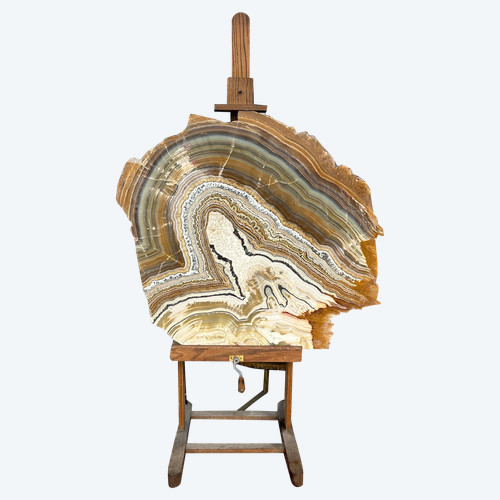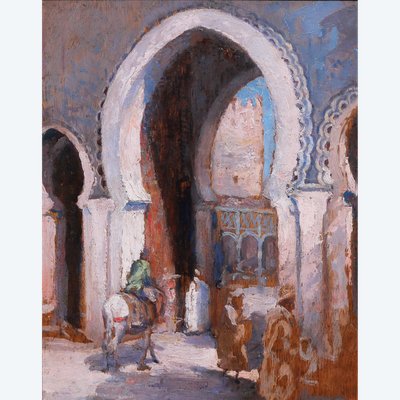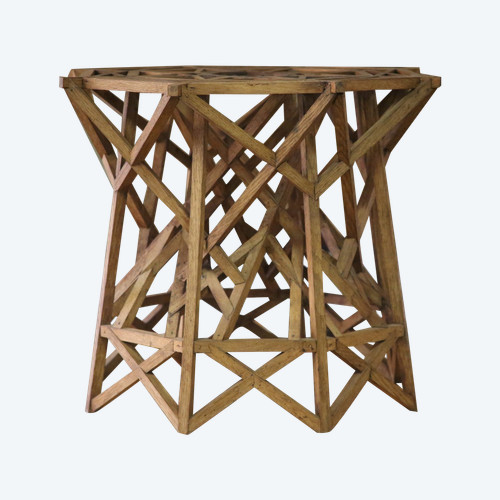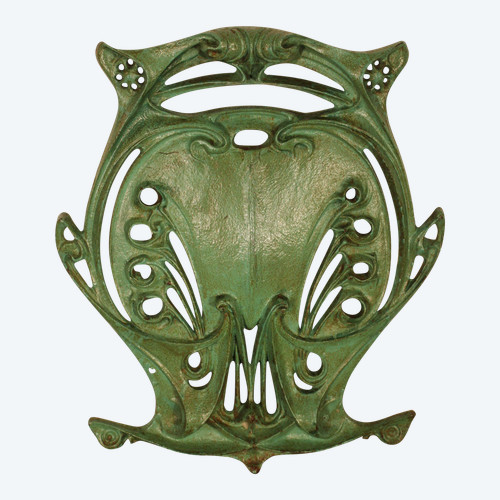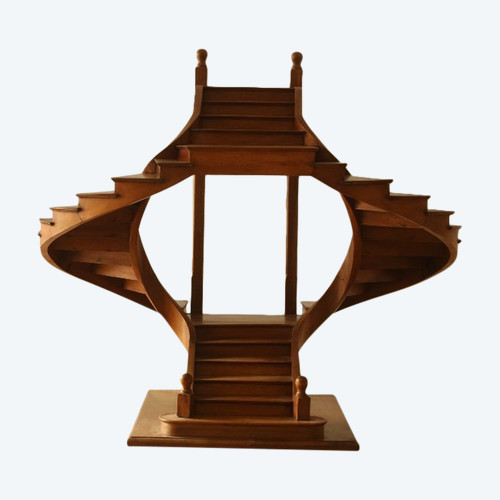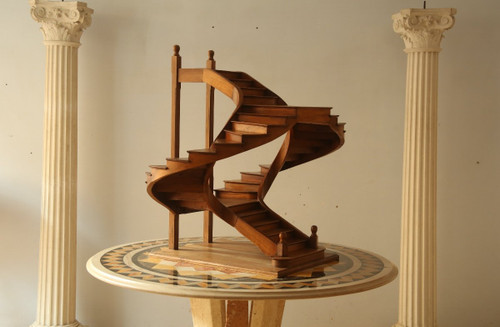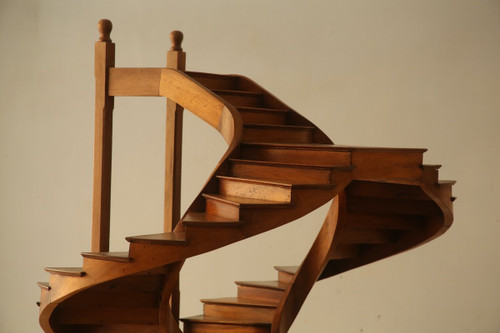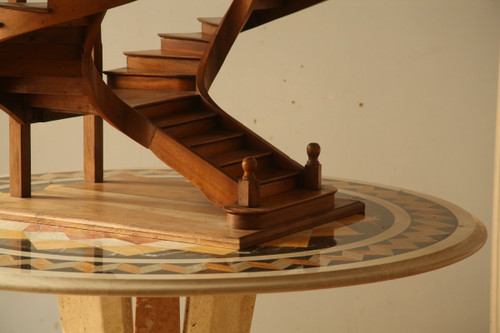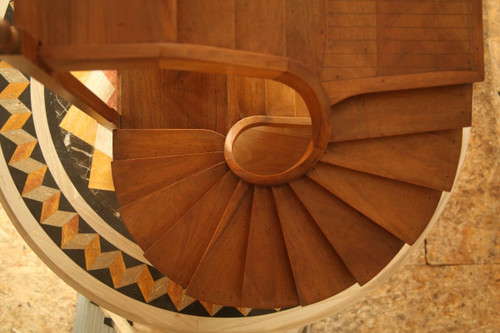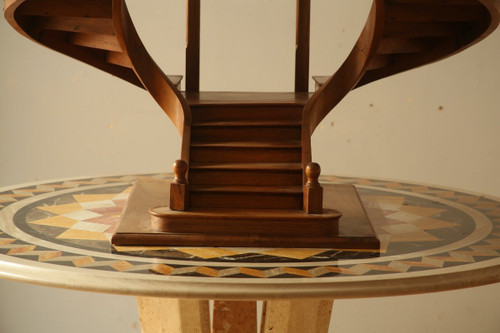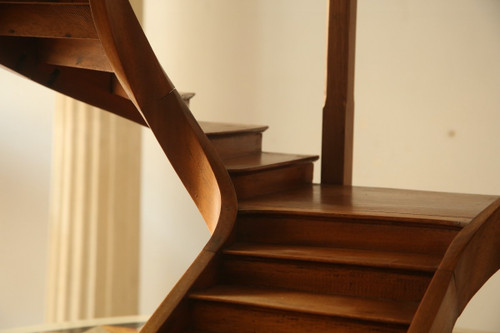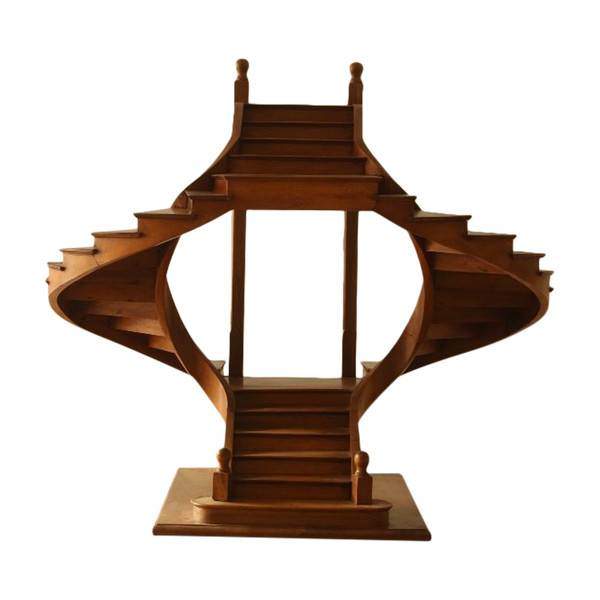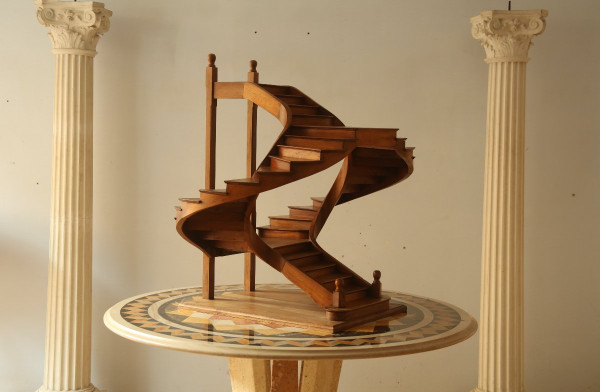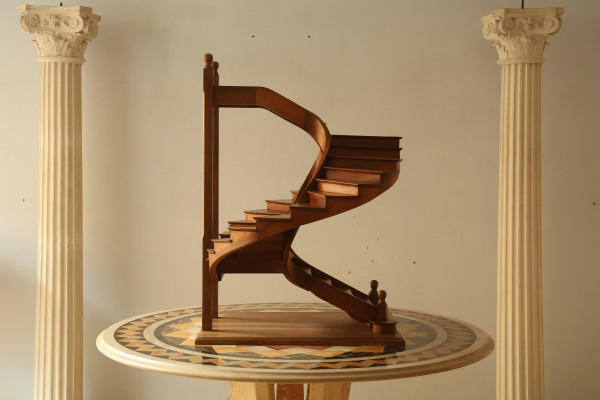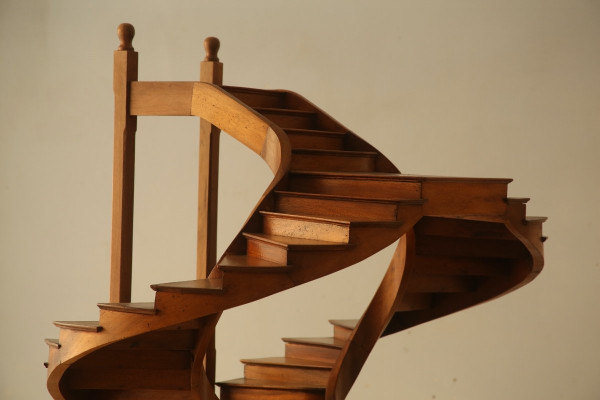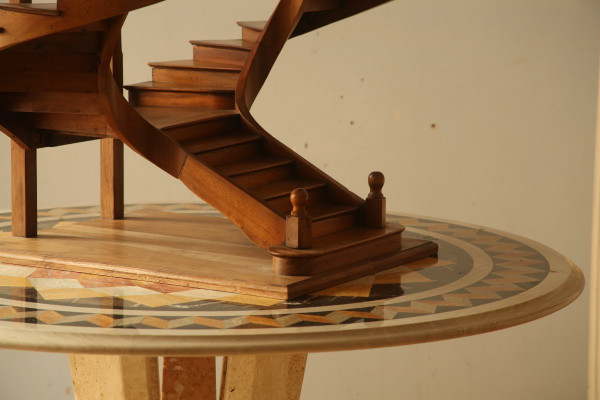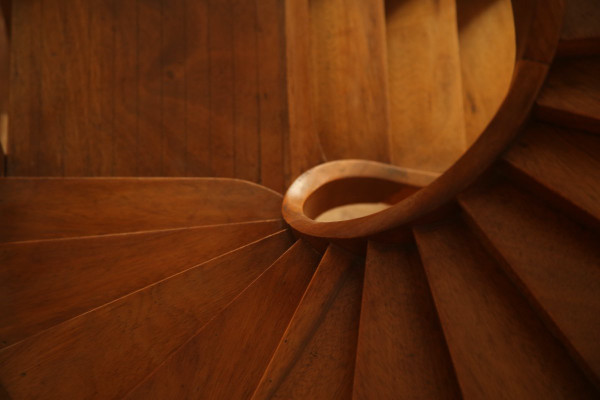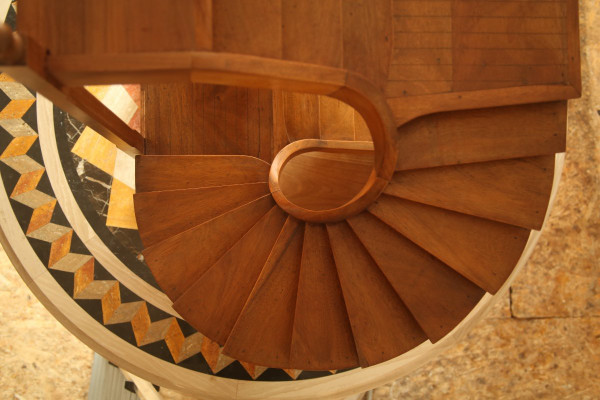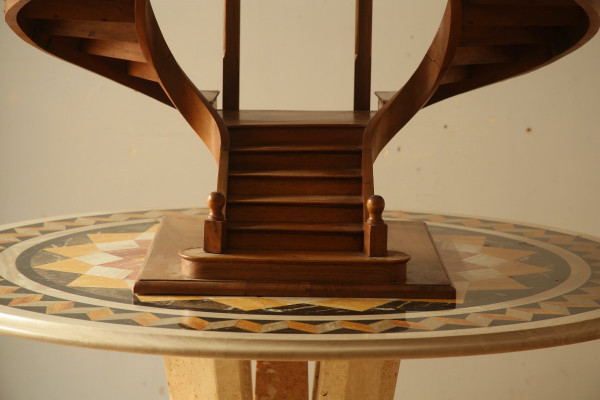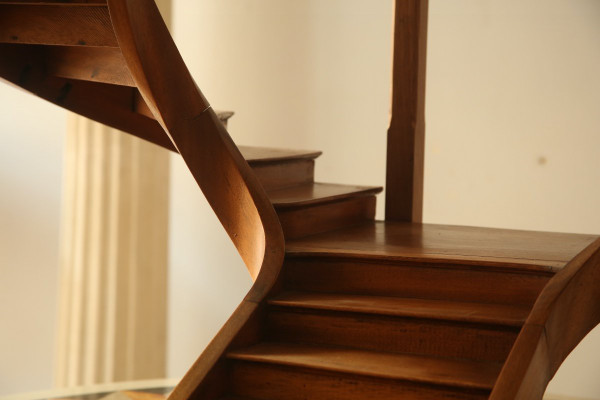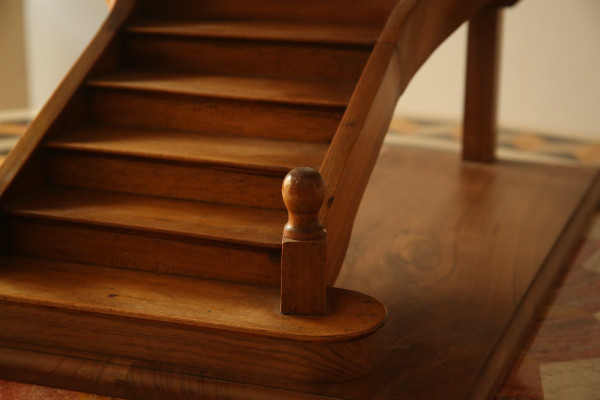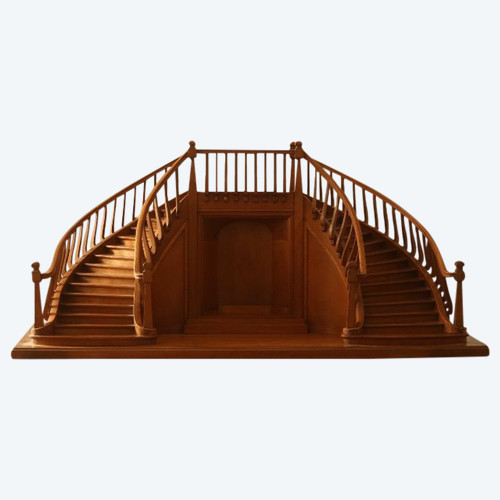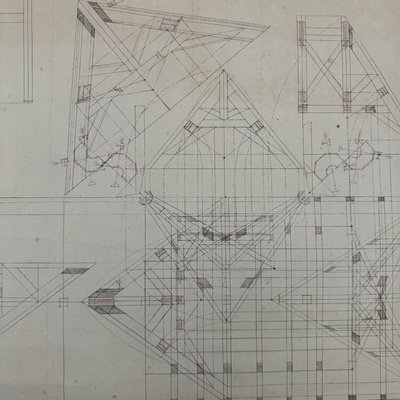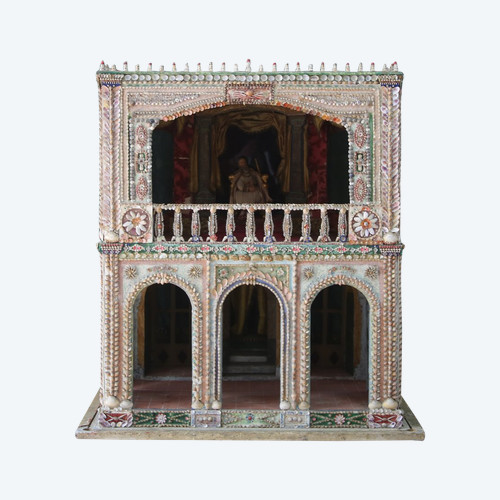This description has been translated and may not be completely accurate. Click here to see the original
-Master staircase or model of a double staircase in walnut, masterpiece of journeyman carpenter Charles Herpin.
- Perfectly symmetrical, this grand double staircase (89 cm high) is organized as follows: a straight flight of six steps leads to a first landing, then two inward-turning flights unfold on either side to converge at a second landing, which invites you to tread a final straight flight of four steps to reach the second floor. The staircase rests on a chamfered rectangular base.
- It is supported by two slender, square-shafted columns that frame each of the two floors, one above the other, for the full height of the escape. These columns are topped by an ornamental ball echoing those framing the first overhanging step. Marking the beginning and end of the journey, they underline the technical skill required to achieve such a work of art. Each element is studied with remarkable attention to detail, such as the parquet-like grooves on each of the three landings.
The curved movement of the flights of stairs is striking, imposing itself with disconcerting ease, while the inner stringboard appears as supple as a ribbon, making us forget the rigidity of the wood. With this work, the challenge of master craftsmanship - to combine head and hands to tame the material and overcome technical difficulties without appearing to do so - takes on its full meaning.
-. The particularity of these reduced-scale works is that they were created by aspiring journeymen at the end of their Tour de France. So they had to showcase their mastery of the craft and their creativity if they were to be recognized by their peers. Technically perfect and aesthetically pleasing, each masterpiece is an assiduous quest for perfection. It's a heap of difficulties conquered thanks to a great deal of preliminary study and intelligence at the fingertips. A privileged tool for contact with reality, the hand nourishes thought, which in turn guides it to transform matter and give substance to the ideas conceived by the mind.
- The exceptional craftsmanship of this work earned its author, Charles Herpin, a medal at the Paris Universal Exhibition in 1889.
This medal is included with the work. Charles Herpin conceived this work as a tribute to the Grand Escalier de l'Opéra Garnier built in 1861, which was widely admired for the grandeur of its dimensions and the elegance of its lines and curves. Through this work, the Herpin companion offers his own interpretation.
- Height: 89 cm (87 cm without base)
Base dimensions: 97.5 cm x 64 cm
Ref: R6RK29NKLG


